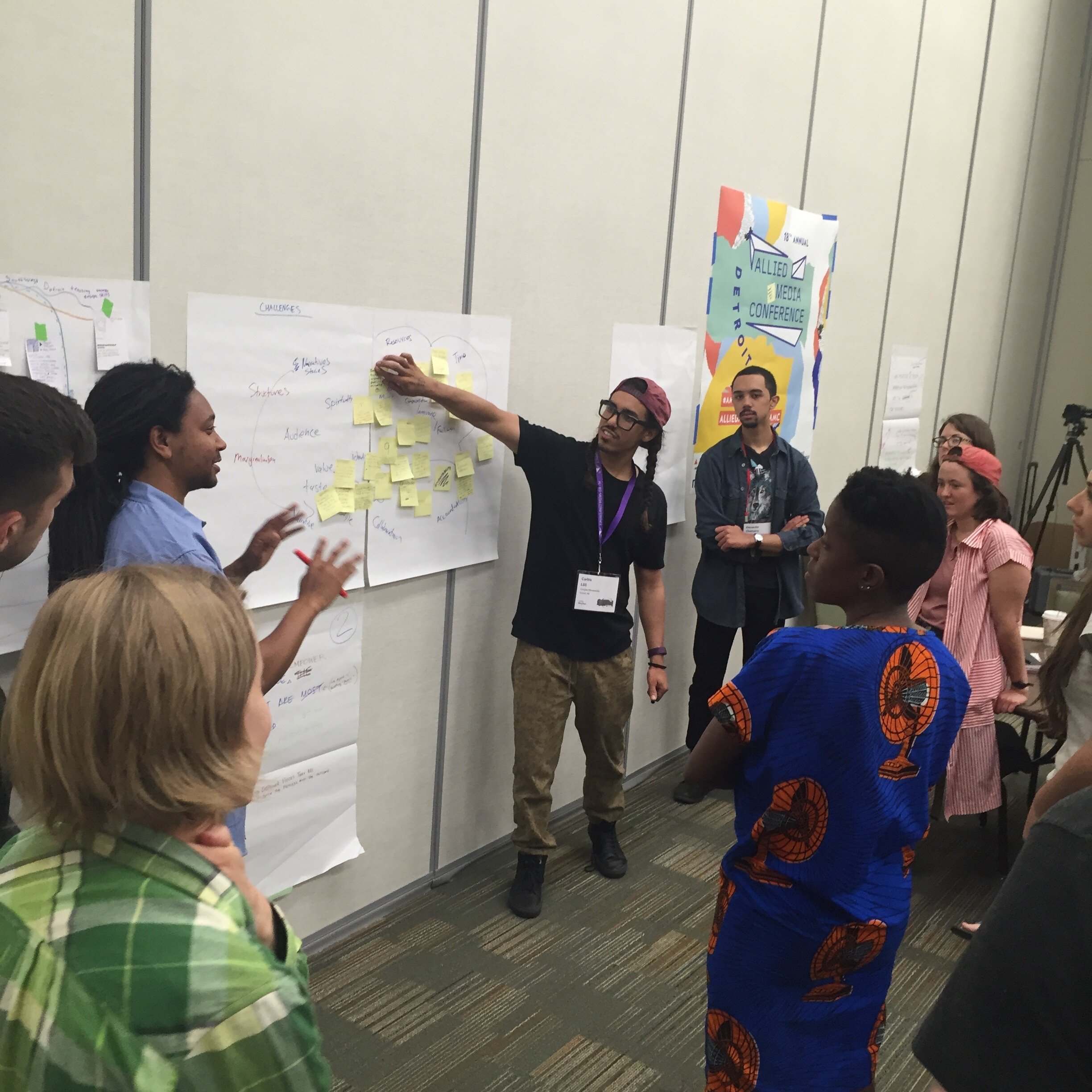Design Justice Network (original) (raw)

Photo description: Several people gathered around a set of chart papers with sticky notes and writing on them. One facilitator, a Black man, is speaking, while another facilitator who is Latinx, points to one of the sticky notes. (From the Design Justice Network Gathering at the 2016 Allied Media Conference)
The Design Justice Network Principles
On June 21, 2015, 30 people gathered in a session called “Generating Shared Principles for Design Justice” at the Allied Media Conference in Detroit. The participants identified as designers, artists, technologists, and community organizers. We developed a set of Principles together that have been refined over time, and that currently read as follows:

Principle 1
We use design to sustain, heal, and empower our communities, as well as to seek liberation from exploitative and oppressive systems.

Principle 2
We center the voices of those who are directly impacted by the outcomes of the design process.

Principle 3
We prioritize design’s impact on the community over the intentions of the designer.

Principle 4
We view change as emergent from an accountable, accessible, and collaborative process, rather than as a point at the end of a process.

Principle 5
We see the role of the designer as a facilitator rather than an expert.

Principle 6
We believe that everyone is an expert based on their own lived experience, and that we all have unique and brilliant contributions to bring to a design process.

Principle 7
We share design knowledge and tools with our communities.

Principle 8
We work towards sustainable, community-led and -controlled outcomes.

Principle 9
We work towards non-exploitative solutions that reconnect us to the earth and to each other.

Principle 10
Before seeking new design solutions, we look for what is already working at the community level. We honor and uplift traditional, indigenous, and local knowledge and practices.
You can indicate your commitment to the Design Justice Network Principles by becoming a signatory.
Get Involved
Our Network runs on the power of members contributions, whether it’s starting a local node, donating, or joining the mailing list and telling more people about the network. Join us!

Photo description: About twenty workshop participants standing in a hallway looking at various papers with stickies on them, posted on white walls. (From the Design Justice workshop in Toronto, February 2019)
